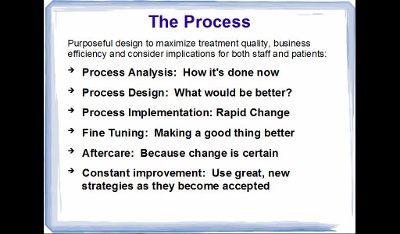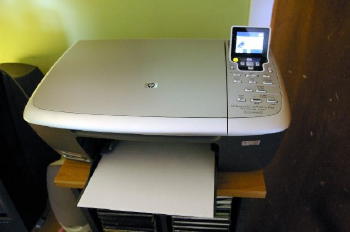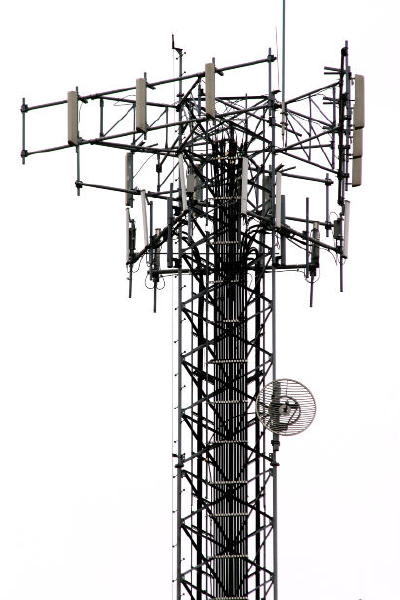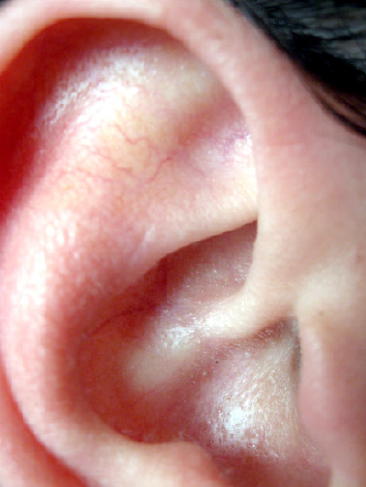-
- 09
Aug - (0)
Approaching Electronic Health Record Implementation
“Implementing an EHR may very well be the single largest project you will ever be a part of in your career”.
Believe it. I would add that if your organization’s EHR implementation wasn’t effective, the solution is to take a different look at how it’s done and plan to optimize what you have…read on.
 The statement above came from an announcement of a NIATx presentation I received recently. In the past, the biggest problem standing in the way of effectively and completely implementing an Electronic Health Record (EHR) for Mental Health and Substance Abuse Treatment was a reluctance to spend valuable professionals’ time and energy that’s required to be successful and make the software do what you want it to do. This could apply to any system, really, from a single provider to a large organization with hundreds of users.
The statement above came from an announcement of a NIATx presentation I received recently. In the past, the biggest problem standing in the way of effectively and completely implementing an Electronic Health Record (EHR) for Mental Health and Substance Abuse Treatment was a reluctance to spend valuable professionals’ time and energy that’s required to be successful and make the software do what you want it to do. This could apply to any system, really, from a single provider to a large organization with hundreds of users.There are a number of approaches to getting the same thing done that all revolve around the same thing: Make the software do what the organization needs. I find that if we look at a few elements at a time, and note people who might be appropriate to head up that aspect of the implementation, we’re more likely to have a successful effort than if we try to blast everything out at once, disrupting the work and lives of every professional and treatment of every consumer.
Here are a few ideas to spur some thought, starting with what I think is most important, and then a couple different aspects of the broader view from experts in getting jobs done.
McLeod’s Method: A call this “my” method, simply because it’s part of the system I use.
 Over the years I’ve picked up a bundle of experience and wisdom from so many sources it would be silly for me to go back and re-construct history….so I call it “mine”. There are many other factors to consider, so I also pay attention to the points attended to by industry leaders in their views below…and more. First, address these bullet points and look into elements like “Rapid-Cycle Change”.
Over the years I’ve picked up a bundle of experience and wisdom from so many sources it would be silly for me to go back and re-construct history….so I call it “mine”. There are many other factors to consider, so I also pay attention to the points attended to by industry leaders in their views below…and more. First, address these bullet points and look into elements like “Rapid-Cycle Change”. Malcomb Baldridge The National Institute of Standards and Technology (NIST) Baldridge Award is a government award for excellence that includes criteria for healthcare for both profit and not for profit organizations. The reason to participate is, according to David Spong, former Boeing executive and winner of the award, is that it improves performance. For professionals, that means not only “production” (seeing more consumers), but improving consumer care for better outcomes. The Baldridge Criteria focus on several elements of importance and help health care organizations achieve and sustain the highest national levels of • Patient safety and loyalty • Health care outcomes • Professional staff satisfaction and engagement • Revenue and market share • Community services
Using the principles and processes of the Baldridge Criteria can’t help but improve an EHR implementation.
NIATx Pointers In a presentation from 2010, NIATx highlighted a number of important points you can use as a guideline in selecting and implementing the EHR. • Why purchase an EHR at all? It may be better for professionals and consumers for the organization to optimize what’s already in place • Is your organization ready? While you’re at it, consider transparency to the consumers and helping them get ready • How do I select a vendor and product? There are tons of approaches: take care, you may want to hire a professional • What about Project Management? Start planning the project prior to purchase so you know what you’re getting into • How does the Implementation affect the entire organization • How do I want to go about training staff and changing business processes to work better for consumers? • What’s the best “Go-Live” strategy? As I’ve said, I’m a big fan of implementing one piece at a time for a bunch of reasons we can talk about later • What are the benefits and problems associated with the EHR implementation?
I don’t mean to sound like a commercial for NIATx, it’s just a good resource. For interested professionals, a NIATx EHR Implementation web presentation is scheduled this week. Given opportunity I plan to listen in, and since I’m a little tardy in posting this, check in with the NIATx website or give them a call to see a copy of the presentation.
Then again, if your organization doesn’t have the people power to manage this sort of effort, and the writing is on the wall that it must be done soon, you may want to consult a professional like yours truly for some help.
Read more → - 09
-
- 29
Jul - (0)
More Services = Healthier Consumers and More Revenue
It only makes sense.
If a professional or professional healthcare team provides a consumer with two services during a visit, the consumer wins because they don’t need to delay getting the help they need and the professional’s revenue increases. I love a win-win scenario.

For the consumer this might mean that a nurse checks her blood pressure, heart rate, etc, and then after a short chat, sends her to a psychologist or other professional to discuss that or another condition. Many apparently physical symptoms like nausea or aches and pains are discovered to be in the realm of a mental health professional’s responsibility; with a root cause of something like grief. This is where an Electronic Health Record (EHR) can really show its stuff in efficiency by electronically alerting other professionals the consumer needs a service and in making sure somebody’s available to help by using the EHR‘s Scheduling Module.
When this sort of thing happens, CFOs love it, process managers love it, and sometimes the treatment professionals may balk at entering a note and charge into the Electronic Health Record (EHR), simply because they’re unsure about the value of that second service and taking the time to record it (some insurance companies and states’ Medicaid won’t pay for the service). We’re all busy people, and it’s possible a second service might not get recorded as an oversight. Today’s EHRs are loaded with reminder systems to make sure scheduled services are addressed, and proper documentation and charges are filed.
Conceivably, since a counseling session can last longer (and pay more) than a short nurse’s visit, only that more profitable service may even make it into the EHR, and therefore the billing system. That could be terribly inconvenient to fostering team spirit, as a professional assigned to diagnosing the patient may want to see the note from the original person who noticed the problem and have a little chat with them before proceeding to treatment for this additional diagnosis. Oh, by the way, depending on who diagnoses the problem and other factors, we may have added to the list another service related to filing the diagnosis itself.
If it’s not in the EHR, the record believes it didn’t happen. It might not be serious, but a secondary service might affect future treatment, so it’s better to record everything.
There are a number of places that second services can be noticed in the EHR, from the front desk checking in, through visits with different professionals, and even at check-out when the consumer gets back to the desk again. A front desk person could notice a limp when a person comes in for a counseling session, or another staff member might notice a consumer with tears in their eyes or who’s behaving oddly. When all staff is mindful about a consumer’s overall health and everybody is acting like a team, more services are rendered. And in the end, even in not-for-profit environments, that can make the difference between replacing somebody who’s left for a different opportunity and giving a salary increase to other staff at the end of the year.
If an organization doesn’t have this sort of mindfulness in place, with the team looking for additional ways a consumer might need help, concentrating on the idea in a staff meeting may be a good idea. Staff education regarding what sorts of symptoms to watch out for can increase vigilance to assure the consumer gets the best care possible. As a bonus to increasing the number of services provided, the revenue of the facility can go up at a time when increasing revenue is critical.
With all that said, there are still operations out there who are stuck with “threshold” billing (where the payor pays one rate for the day, regardless of how many services are provided) for some insurance payors, wherein all services provided during a single day’s visit must be included in that day’s bill for a fixed fee. No extra charge. Others will only pay for explicitly defined additional services under specific conditions. In some cases, payors may seem to make it difficult to charge for additional services. As in anything that has to do with business, you gotta be sharp and make the time it takes to optimize revenue. That may require some help from a consultant or moving a staff member into a position that’s primarily responsible for increasing revenue and assuring documentation and billing are on-track in order to provide the best care possible. With that resource in place, the EHR can be both a guide to making sure needed services are provided to the consumer, and a police officer to assure the billable record is recorded.
Read more → - 29
-
- 19
Jul - (0)
A Facebook Sidebar
On June 21st, I published my comments on Facebook for business…I just didn’t know it had become so important to augment a business site with a Facebook presence. Now I know. Interestingly, the visits to my website jumped by fifty percent for the month. I believe that was simply because Facebook is so doggone popular and my blog came up in the search engines more.

I recently attended the NIATx conference in Boston, and H Westley Clark, Director of CSAT (http://www.samhsa.gov/about/csat.aspx) was a featured speaker. He mentioned in his address that one of the difficulties in delivering treatment documentation to consumers is that it may end up on Facebook. This brings up aspects of confidentiality that are important not only to the consumer, but also to the professional and even the organization they work for.
The Electronic Health Record (EHR) is becoming more and more expansive these days. In addition to the assessments, treatment plans and progress notes, you might see brain scans or even recordings of telemedicine sessions. I asked Jim Mountain, a vendor of telemedicine software, about recording sessions. He advised that it can certainly be done, however, would a professional want to do to that when there’s a danger it could end up on YouTube? All the systems I’ve seen (and I’ve seen a ton) have proven secure, and hackers are not likely to effectively plumb for health information, however, all health records are available to consumers, who might make a decision to share portions of the record on social media. If you’re a professional, consider how you’d feel if your notes were shared that way, or your sessions broadcast.
I believe the consumer’s health record is their property as much as the professionals and the organization they work for. It needs to be guarded, and is. A friend of mine manages a business that protects the consumer identity of methadone treatment recipients from the state…42 CFR prohibits even the state from knowing the identity of consumers they are paying for with Medicaid. The point of this is protection. It’s pretty good these days as long as records aren’t accessed on a lost laptop computer or published on Facebook or YouTube. I doubt it’s likely to happen, but it could. Perhaps an agreement between the consumer and the professional to keep the record that’s provided to the consumer confidential is in order.
This is a huge issue. A couple years ago, Duke FUQUA School of Business published their take on just how huge it is. And they’re not the only ones who’ve been debating, just search of the web on this subject, and you’ll find no shortage of opinions.
This is great food for thought about security, and while the consumer’s privacy is paramount in the business of mental health and substance abuse treatment, it seems to me that the professional’s privacy deserves some respect. And I think that’s the point, professionals spend a considerable amount of time and energy learning their craft, and the subtleties of what they do may be lost on a casual reader, followed by misconceptions that could affect the professional’s business or reputation.
I found these revelations fascinating comments on how our world is changing and Facebook is taking over the world. It will be interesting to watch this issue escalate.
Read more → - 19
-
- 13
Jul - (0)
Enterprise Software Evils
A post on Linked In shared a consultant’s opinion that enterprise software breeds evil.
Well, now, that’s just nonsense. Enterprise software is designed for an agency, in my interest an Electronic Health Record (EHR) for mental health or substance abuse treatment organization, and the software helps people get their jobs done, meet regulatory requirements, assure billing gets done so everybody gets paid, and another very important thing. It may be tempting to rely on memory of a case record rather than go to the chart room to review the consumer’s chart prior to a session. That can be not-so-good; the EHR eliminates trips to the chart room to see previous assessments, progress notes and treatment plans, conceivably bringing a more educated professional into a session and improving the consumer’s likelihood of getting better.

Where does this perception of enterprise software’s evils originate? If I rely purely on anecdotal information, it comes from the customer’s experience with poor implementations. I’ve implemented, been cursorily involved with, and heard of a few EHR implementations, where not every person on the team followed all the advice that ultimately has the professional/consumer relationship in mind. And that shortcoming includes both vendor and agency. Poor planning is the usual culprit.
Over the weekend I went to scenic Boston, MA and attended the NIATx/SAAS conference and was able to sit in on a couple consultants’ sessions about implementing EHRs. I also talked with several vendors, and made an interesting discovery. The “middle tier” of software vendors has come of age. These are software companies that aren’t so big that they’re priced out of a medium-sized agency’s market, or so small they can’t support what they sell. I was particularly interested in the address by keynote speaker David Spong. Another speaker that held my attention was an old friend to substance abuse, H Westley Clark, the director of the Center for Substance Abuse Treatment (CSAT). The consultant’s sessions were interesting insomuch as the questions coming from the audience were the same questions professionals were asking fifteen years ago and before. • How do we pick a software company when there are over 100 vendors out there manufacturing EHRs? • Once we pick an enterprise system, how do we install the doggone software in less than a year and a half? • How do we get professionals to use the system (some are pretty resistant)?
The vendors I talked with in the display area were cordial, very nice guys. I wanted some information that’s key to my business, as it had been a year since I’d updated my records on these vendors. I asked some simple questions, including: • How long have you survived in this tough business? • How many customers do you have, in how many states? • Is your software certified to meet Meaningful Use requirements?
There were more questions, and I plan to address these industry concerns in upcoming posts. Who knows, I may even include some actual information on how to avoid implementation pitfalls and make the experience transparent to consumers…techie consumers are likely to be the only ones interested in this, but for professionals, I think it’s a good subject. I’m thinking about a few reviews of vendors, and sharing my process for narrowing the field of vendors to a manageable few that can be included in a software search.
All in all, the NIATx/SAAS event is a good experience, filled with people who actually care enough about the consumers to stay in business and serve them. I’ll likely attend next time.
…and I software and vendors aren’t evil.
Read more → - 13
-
- 21
Jun - (0)
Why Facebook?
I guess I just didn’t ask.
That’s a great sin in my business, and probably in my life, and I’m guilty. This publication is available on Facebook when you “friend” MentalHelp.net Click on the Facebook icon. I never saw the value and never thought to ask what it was, simply because the guys at MentalHelp.ne o a great job, and my site, www.mindhealthbiz.com receives a respectable number of monthly visits (thank you so much!). So, since things are so ducky and I’m always seeking more exposure, I’m asking now, “Why Facebook?”

Recently I stumbled on a reason: Facebook pages can receive more hits than my regular website. This is according to The Social Doctor. Who knew? Evidently my friends at MentalHelp.net did, and I never asked about it when I saw they’d started a presence on Facebook.
So, businesses have been creating business presences on Facebook for at least a couple years. In 2009, GIGACOM shared how to be effective with this level of marketing. What this means is that over the past two years, businesses have been leveraging this additional way to interact with customers, consumers, professionals and prospects and at the same time, register “hits” on the web, which equates to a more popular web presence, which is good. Hits look good to marketing types, interacting with customers pleases other corporate types who actually know that the customers, consumers and professionals counts, so Facebook for business makes sense on multiple levels.
Not to mention, it’s a nifty way for consumers to have a closer relationship with all my professional peers on MentalHelp.net.
Google has so many features that tell me about me, it’s almost scary. I’ve made my bed, though so I guess I’ll accept that…the problem comes in when that other Terry McLeod comes into the picture that has nothing to do with MindHealthBiz. These days the search engine seems to be doing a better job of weeding that guy out of searches for my site. Another feature is that cool magnifying glass to the left of the search item that pops up a view of the page associated with the link. But wait, there’s more…Google asks if you want to see more of the site, or similar to the site, or sub categories available on that site, like specific posts to a blog. All very cool. As a novice, it’s easy for me to ask “Where’s the linik to the Facebook pages in all those listings of me?” The first thing that comes to mind is that a respect for privacy stops that coverage for personal accounts, but what about business pages? Just because I can’t find them in Google doesn’t mean they’re not there. I just didn’t see them.
Although I had a long career in software manufacturing, developing some technical and software expertise, I still had to search “MentalHelpNet Facebook” to discover the link to that place. This tells me that the best way for my business to interact with folks on Facebook is through that little Facebook icon. I think this would take a while to build up any regular traffic to the Facebook business account. I must be missing something. It only makes sense that both the business website and the Facebook business account should come up in the search engine when I enter the business name.
Assuredly, this is a result of user error or neglect on my part.
So, the answer for MindHealthBiz and Terry McLeod is continued research to clear up too many questions about this technology. I will likely find the answers only by starting a business account on Facebook, for which there are directions.
Read more → - 21
-
- 13
Jun - (0)
Document Image Management
Boy…that sounds boring.
I suppose it could be for those not interested in the Electronic Health Record (EHR), and for those who are interested, innovations to what Document Management is, its value in treatment, and what it could mean in the future, this is a pretty good topic. Consumers and professionals need to be aware of the consumer’s record and how information becomes part of that record.

Recently I shared about Health Information Exchanges (HIEs) (see my last post). HIEs and Document Imaging can be viewed as two sides of the same coin. HIEs share data electronically without a document ever having to be printed, while Document Imaging is generally an electronic copy of a printed document.
John Mancini, president of the Association for Information and Image Management, has opinions about the insufficiencies of the EHR based on personal experience, as well as his own expert opinion. I love to take exception to an expert opinion, and still I’ve seen tremendous movement toward scanning outside documents into a consumer’s EHR. Most mental health and addictions treatment software manufacturers have or plan to have built in technology to include scanned documents from outside sources like labs and other professionals. They even interface to document imaging systems created for multiple departmental environments like hospitals. I imagine it is common enough for a private practice to rely on the paper chart, and certainly our industry hasn’t become fully acclimated to the EHR. Implementation of the EHR has, however been on the increase, and there’s a deadline. The commandment is for professionals to be operational on the EHR by 2014. Originally envisioned in the Bush era as a primary task that would be nothing but good for healthcare in the United States, this goal was reiterated by president Obama when he took office. Both Document Imaging and HIEs contribute to a consumer’s electronic record.
Along with document imaging capabilities, I commonly see software interfaces to labs and pharmacies required as part of the purchase of an EHR. Interfaces to electronically share data are big business, and can be expensive. Without stimulus funding in the form of Meaningful Use incentives, professional organizations in our industry can lag behind the requirement, simply because they can’t afford it. In our sector of healthcare, some professionals rely less on labs and pharmacies than others, so they may not have enough data volume to justify an interface…in some cases the cost outweighs the benefit. Other professionals may see the value in having the data on the computer, and can’t see that interfacing to these ancillary providers will even be used when they have a printed lab report that all the professionals in the organization are used to.
One thing is certain; searching for a paper document can slow down service for the consumer, and is where document imaging comes in handy.
In a computer, each consumer is assigned a number, and that number is likewise associated with the lab results and pharmacy orders or other document when scanned into the computer’s secure database.
If a consumer comes to a professional with a referral from another facility, or an existing consumer returns with a discharge summary after a stay in the hospital, the associated documentation can be electronically attached to the consumer’s record number, with a link or command button available in the consumer record that pops the lab results or list of currently filled medications to the screen.
My last post discussed how Health Information Exchanges (HIEs), which eliminate the need for a provider to scan and attach these types of data to the consumer’s record by making them available electronically: • Current demographics • Diagnosis treated • Services rendered • Medications prescribed • Admission and Discharge summaries
Whether or not professionals and the organizations they work for will profit from interfaces or HIEs to electronically share data, or be better able to justify a document imaging system, either as an added stand-alone system or one that’s built into their (EHR), is a decision that needs to be made with the consumer’s treatment experience in mind. It’s never a bad idea to chat with a consultant when it comes to determining the better value of multiple technological choices.
Read more → - 13
-
- 07
Jun - (0)
Health Information Exchange
The number one trend in my business, according to Healthcare Technology News will be the growth of Health Information Exchanges (HIE).
We’ve known the importance of electronic sharing of patient data for decades, and these days the hesitancy we felt in the past has become an obsolete emotion. With the advent of HIPAA and its embracement by forward moving legislation as well as new technologies, confidentiality is better assured than ever before.

In mental health and addictions treatment, there are a number of elements of patient data that can be shared that provide a number of benefits. Mistakes are fewer and efficiency is increased on the data entry side of recordkeeping. Treatment can be improved with a broader knowledge of the consumer’s healthcare events and who’s been treating them lately. Conceivably, when a billing address changes, the HIE could assure all professionals in the neighborhood treating the consumer have the most recent information. Professionals have dreamed of having access to few key types of data that multiple agencies treating a consumer might need in order to effectively treat the patient: • Current demographics • Diagnosis treated • Services rendered • Medications prescribed • Admission and Discharge summaries
Now, these elements are available through HIEs..
I am increasingly impacted by the success of HIEs When I was hospitalized a few years ago, and after discharge treated by a couple specialists within the hospital’s network of associates. I was very happy not to have to fill out so many pieces of paper, so somebody else could enter that data into the computer. It was already verified as correct while I was in the hospital, and immediately available to the specialists as soon as I’d signed a Release of Information (ROI).
This is the essential nature of other sorts of consumer data exchange networks, like a Regional Health Information Organization (RHIO). There are many examples as this model is based on a local network of providers….there tend to be a bundle of different solutions where the need seems to support them, and that’s the case with sharing health information. Usually providers pay to become a member of the RHIO, and they will be able to see other local providers’ information like the elements listed above for a specific consumer. I share the opinion of some experts in the field that eventually all these networks will be joined together by the states, and ultimately the feds to finish creating the National Health Record that was mandated back in the Bush era.
I also agree with Adam Gale, president of KLAS, that with all that availability of data we should wonder what it’s being used for…Is the HIE matching patient addresses with their diagnosis in order to sell a list to a major anti-depressant manufacturer? It’s not likely, and that line of questioning is certainly valid for providers joining an HIE.
Conceivably, the value of the access to patient data should exceed the cost of belonging to an HIE. Will the government mandate for all patient care to be recorded in the EHR include the HIE? Testing the wind and laying out an opinion, I’d say it’s a great goal to have the consumer-authorized availability of information among providers, and for the most part that’s happening…it may take a few extra years get the EHRs connected, simply because the technology to make the secure connection, the mapping of the data from an existing EHR to the format needed by the HIE, and other technical concerns add up to a significant price tag.
Read more → - 07
-
- 23
May - (0)
Is My Health Record Safe?
Crime runs rampant! If a hacker has my health information, chances are high they can get yours, too. Frankly, if they have mine, I find that less disconcerting than somebody having access to my credit card and bank accounts. Perhaps if I were a senator or a member of the president’s cabinet, I might feel differently…as you may feel also. I may not care who knows I have three stents in my heart or that I have a history of being treated for anxiety. That senator or cabinet member, however, may have a very unpopular disorder and want that knowledge guarded zealously.

The idea behind hacking computers to get data is to turn it into money, and people are pulling down big bucks for sharing certain data with certain people! Apparently, holding data hostage is getting to be a popular pastime these days. I ran across a bundle of opinions about what the future holds recently in Healthcare Technology News for we who are interested in Electronic Medical Records (EHRs), and the article on healthcare hacking by Mark Kadrich set my imagination wandering. How can we improve security to healthcare systems?
In this industry, we need to make no mistake about it, consumers’ health information need to be secure, and it’s the professional’s responsibility to make sure security measures are in play…their tools are stringent password security and all that magic software that runs in the background to keep hackers out of systems. Electronic Health Record (EHR) software is currently regulated by some pretty stringent laws, and I’ve thought we had done pretty well in guarding healthcare data against hackers. HIPAA, data encryption, complicated schemes for patient Release of Information (ROI) and other measures combine into quite a net of security, right?
One hospital I worked with required me to negotiate three different security systems to get to the database I needed to work on. Even with all those levels in place, they recently suffered a virus attack that took a couple months to recover from. The good news is that from the recovery, they ended up with better EHR protection. It was, however, quite an expensive way to earn wisdom. A visit from a security expert and a system security tuneup might be a better solution. It pays to hire the professional, and a couple years ago a friend of mine graduated from a professional education program as an expert in system security; it’s a very specialized and valuable vocation…he got a job within weeks of graduating, and earns his tremendously increased salary
Healthcare Professionals are being encouraged to protect their consumers’ data with yet more security measures, even to the PC level and for SmartPhones. There are a ton of solutions out there. Without a careful analysis of your needs, what’s been effective and ineffective, which companies have a good track record of improving their products when a customer’s data is compromised, and a number of factors, who can say what’s best for you? The salesperson? Perhaps.
I am occasionally put in the uncomfortable position of recommending products and services like this, and frankly, I recoil as from a hot flame…there are plenty of security experts out there (like my friend), so I bring one of them into the equation. Technology changes by the minute, and I have enough work to do keeping tabs on EHR products and development. It’s like laundry…I hire a professional because if I handle it myself, I’m bound to end up with an irremovable stain.
Read more → - 23
-
- 12
May - (0)
When Some People Talk
Yes, I actually try to listen. Sometimes.
Richard Blumenthal is one of the folks I listen to when he speak because he’s the National Coordinator of HIT and impacts my interests and business. I ran across his opinions recently in Healthcare Technology News and I couldn’t resist commenting, since the opinions revolve around trends in healthcare IT.

Blumenthal feels ARRA’s IT aims are being met. At the risk of repeating myself, I tend to agree. The Electronic Health Record (EHR) has used all the attention to spring out of the gate with increasing sales of software due to the incentives offered Behavioral Health lags behind, but see my last post to understand why I feel Mental Health and Substance Abuse Treatment will soon catch up with the rest of healthcare IT.
Lately, my work has led me to help organizations who have never fully implemented their EHR, which was purchased years ago. They are finding themselves realizing the benefits they originally purchased the system for, much later than expected. Scheduling is working better for professionals, there are shorter wait times for consumers, and management is getting figures they need to project how they need to do business in the short-term and into the future. The value of the EHR is coming to the forefront.
Implementation of the software was originally not accomplished due to a number of factors, not the least of which was the inability to foresee that a software implementation would take as much effort on the parts of the employees as it did. This led to inefficiencies in the implementation effort like having to re-train some staff members in the mission critical efforts (usually those affecting billing or the largest piece of revenue). In short, when the implementation dollars were spent, the project stalled and a bundle of software features like scheduling, assessments, treatment plans and progress notes never made it into daily life at the organization. The vendor and the customer often came to an impasse that so adversely affected their business relationship that the EHR was never implemented. What this meant to the consumer was about a year and a half of disorganization for people supposed to be helping them. In some cases there were ever-increasing delays in getting needed treatment, which led to no-shows, resulting in poorer service to customers and some people not getting the help they need at all.
Another barrier to implementation has been acceptance by doctors. Usually they just didn’t want to slow down to learn how to use the software…in some cases, the software wasn’t designed with their workflow process in mind. These days more and more doctors are being drawn into using the EHR by their peers. I’ve seen this happen in the field, and many doctors using the EHR love it. Some wait to retire, never learning to use the software. I find the same pressures to use the EHR come to bear throughout a Mental Health or Substance Abuse Treatment environment…Nurses, counselors, administrators, even executives are feeling the peer pressure and learning the systems.
In some cases, this shift requires a new software purchase and implementation. Folks discovered the vendors are better at that job these days, and staff is more accepting of the change. In other instances, staff has been so impacted by The Internet and home computer use (Facebook and Email are really big hits with all demographics), they are more accepting of the EHR and learn how to use it more quickly.
So, a psychological change is under way in organizations in this sector. People are more accepting of technological change these days, and a few are even enthusiastic. The EHR is spreading, and the results are helping consumers, professionals and helping organizations.
Read more → - 12
-
- 25
Apr - (0)
The “As-Is” EHR
A highly placed woman in a major New York City social services agency impressed me with her wisdom recently. She said that she didn’t want to have a committee build an Electronic Health Record (EHR) from scratch, even though that’s possible with the software the agency selected. The facilities would use whatever came from the software manufacturer wherever possible. During the purchase process, she had seen that the vendor had fine-tuned solid functionality over the course of many years and the result was a pretty good product even though some of her staff might want it to operate a little differently.

EHR software is generally manufactured with a number of workflows in mind, and some software can be modified to work virtually any way the staff wants to use it. These days the difficulty can be in where to draw the line and accept what the vendor suggests.
In this age of screen and functionality design tools and report writers that moderately tech-savvy professionals can use, this was the voice of experience speaking: too much design slows the EHR implementation process and can detract from consumer service. If treatment professionals on a software implementation team are obsessing about adding data elements, logic and reports to the system, they spend less time focusing on the mission of the facility they work for: serving the consumer.
Here’s how report writers and customization tools pay off: A lot of consumers depend on government and charitable funding to get the help they need. Sometimes these funding sources are not used by many professionals or treatment facilities, so software vendors will charge extra to meet reporting needs that facilitate getting paid…everybody needs to buy shoes, and the vendor’s development option may be quite expensive. A design tool or report writer in the right hands may be able to produce what’s needed at a fraction of the vendor cost in order to assure a consumer’s services are paid for.
So, this is the dilemma. Many software products include tools delivered to make at least minor modifications to EHR software’s “out of the box functionality”. Most treatment organizations keep their professional staff busy helping consumers, so they’re not the ones to be using those tools. The simple solution to getting needed functionality on line is to hire an EHR professional, who does this sort of work for a living, cheaper than the vendor. These folks are certainly available, and as long as they have guidance from both the executive and professional levels, they can usually help minimize disruption of services to consumers during and beyond software implementation. It’s also in the interest of minimizing disruption and getting the EHR functioning in a reasonable amount of time that an agency should consider using as much “out of the box” software functionality as possible. For the minor changes (adding a data field, modifying a screen or writing a report), the design tools and report writers come in mighty handy and avoid future development fees.
When an agency purchases an EHR, it makes sense to assure it comes with a flexible, powerful design tool. Sometimes work flows change, and management seems to forever be asking for more information displayed in a different manner to meet some requirement or another. Two years down the line, new fields or even an entire form may be needed to meet the need for only a few people to do the input, and fewer people to see the reports. The financial reward of the new features or functionality may not justify what a vendor charges; a person on-staff or consultant who knows the built-in design tools can limit the new fields and reports to just the right people if the design tool is good and the EHR security rights comply with current technology standards.
Since mental health and substance abuse treatment professionals should be busy helping consumers, a reliable EHR professional to help with additional functionality needs to be accounted for…both present in the workplace and with a line in the annual budget. Another great thing about purchasing an (EHR) right now is taking advantage of groovy technologies like SmartPhone connections, functionality that forces users to meet the rules of HIPAA, HITECH, and other acts or agencies, and patient access to their own medical records over a secure internet connection. Professionals seeking an EHR need to be cognizant that the bulk of the features and functionality they want comes with the system. Development is expensive and generally takes a long time. So, make sure what you want and need is in the contract, and whatever’s not in the contract can be built with the design tools that come with the system.
Getting the EHR to fit a specific organization’s needs can be an expensive undertaking, and tying together standard elements involved in purchasing and implementation of the software is important down to a very granular level…it’s good to know what you’re getting yourself into.
Read more → - 25
